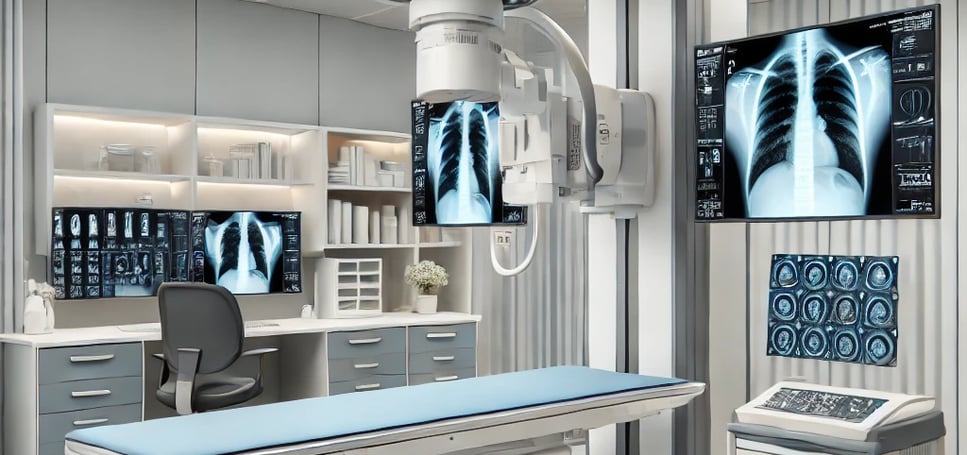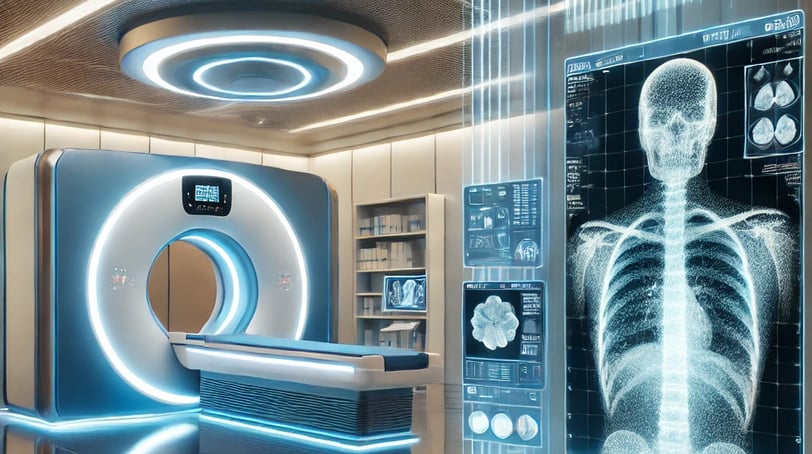Digital Transformation in X-Ray Machines: Revolutionizing Medical Imaging
X-ray technology has been a cornerstone of medical diagnostics for over a century. With the advent of digital transformation, X-ray machines have undergone significant advancements, offering better image quality, faster results, and enhanced efficiency. This blog explores the journey from analog to digital X-ray machines and their transformative impact on healthcare.
5/8/20241 min read


5. Challenges in Adopting Digital X-Ray Machines
While the benefits are immense, some challenges include:
High initial investment.
Need for specialized training for healthcare professionals.
Ensuring data security and compliance with privacy regulations.
6. The Future of Digital X-Ray Technology
The digital transformation journey is far from over. Innovations such as AI-driven diagnostics, real-time 3D imaging, and wearable X-ray devices are set to redefine the future of medical imaging. These advancements promise to enhance patient care and streamline healthcare workflows.
1. What is Digital Transformation in X-Ray Machines?
Digital transformation refers to the shift from traditional film-based X-ray systems to modern digital solutions. This transformation involves the use of digital detectors, software-driven image processing, and cloud integration for storing and sharing diagnostic images.
Key Features of Digital X-Ray Systems:
Real-time image acquisition.
Enhanced image resolution.
Reduced radiation exposure.
Seamless integration with electronic medical records (EMRs).
2. Benefits of Digital X-Ray Machines:
a. Improved Diagnostic Accuracy:
Digital X-ray machines produce high-resolution images that enable radiologists to identify even the smallest anomalies, improving diagnostic precision.
b. Faster Turnaround Time:
With instant image capture and processing, digital X-ray systems significantly reduce the time required for diagnosis, especially in emergency cases.
c. Cost-Effectiveness:
Eliminating the need for film and chemicals reduces operational costs, making digital systems more economical over time.
d. Environmentally Friendly:
Digital systems minimize chemical waste and reduce energy consumption, contributing to sustainable healthcare practices.
4. Applications of Digital X-Ray Machines:
a. General Diagnostics:
Digital X-rays are widely used for routine imaging, such as chest X-rays, bone fractures, and dental assessments.
b. Portable Solutions for Remote Areas:
Portable digital X-ray machines enable medical imaging in remote and underserved regions, improving accessibility.
c. Advanced Imaging Techniques:
Digital X-ray systems support technologies like dual-energy imaging and tomosynthesis, offering detailed insights for complex cases.


Innovative
Contact Us
Service
xraybazar.com
© 2024. All rights reserved.
Address- Rajasthan, India
Gmail Id- xraybazaroffcial.com
Important Links
